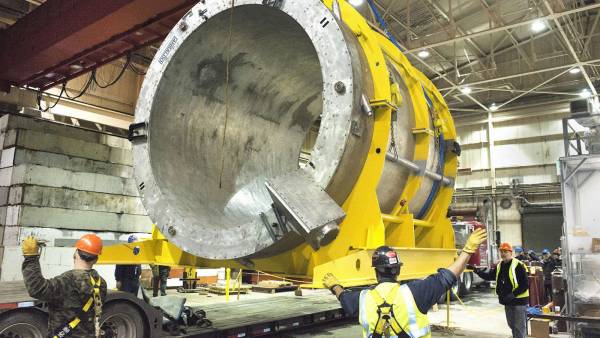Project: Detecting magnetic fields
An experimental magnetic field detector has been constructed outside of the town of Lakeview, due to the presence of a new mysterious particle. You and your team have been contacted to determine the charge of this new particle and construct a model of what the magnetic field should look like. Thankfully, you've gotten some initial data from your colleagues. They were able to measure two different magnetic fields for a particle that was moving with velocity of $\vec{v} = <0, -20, 0> m/s$. The first field was measured 1 m to the right and 1 m up from the charge particle and found to be $\vec{B}_1 = <0, 0, +7.07E-6> T$. The second field was measured 4m beneath the particle, and interestingly was found to be $\vec{B}_2 = <0,0,0>T$.
Your colleagues have also worked on a somewhat constructed model of the field, but it looks like there are some pieces of code that the team wasn't sure what to do with. You will need to select a few locations to model the magnetic field due to the new particles and produce arrows that represent the magnetic field as the particle moves by. This will provide much needed information about these new particles!
## Scene setup scene.background = color.white ## Parameters and Initial Conditions velocity = vector(0,-20,0) #q = ??? Don't know this?? ## Observation Points - Need at least 3??? ## Objects charge = sphere(pos=vector(0,2,0), radius=0.1, color=color.blue) xaxis = cylinder(pos=vector(-3,0,0), axis=vector(6,0,0), radius = 0.01, color=color.black) yaxis = cylinder(pos=vector(0,-3,0), axis=vector(0,6,0), radius = 0.01, color=color.black) zaxis = cylinder(pos=vector(0,0,-3), axis=vector(0,0,6), radius = 0.01, color=color.black) ## Calculation Loop t = 0 dt = 0.001 while t < 2: rate(100) charge.pos = charge.pos + velocity*dt t = t + dt if charge.pos.y < -3: velocity = vector(0,0,0) ## Not sure what to do with these ##p = sphere(pos=vector(-1,-1,0), radius = 0.1, color=color.cyan) ##Barrow = arrow(color=color.red) ##Barrow.pos = p.pos ##Barrow.axis = vector(0,0,0)
Learning Goals
- Visualize the magnetic field from a single moving charge
- Use the right hand rule to predict the direction of the magnetic field
- Understand how to use a cross product conceptually and mathematically
- Explain the similarities and differences between electric and magnetic fields
Conceptual Questions:
- Why is $B_2$ equal to zero?
- How is magnetic field different than electric field? What is similar?
- What is a cross product? What role does it serve in the magnetic field equation?
- How does the right hand rule work for calculating the magnetic field?
- What is a “normal” size for magnetic fields? (Look up how big is Earth's magnetic field, fridge magnet, etc.)
- What shape is the magnetic field around the moving point charge? (Hint: make multiple observation points and move them around)
- What assumptions did you make for the problem? How would you evaluate your answer?
